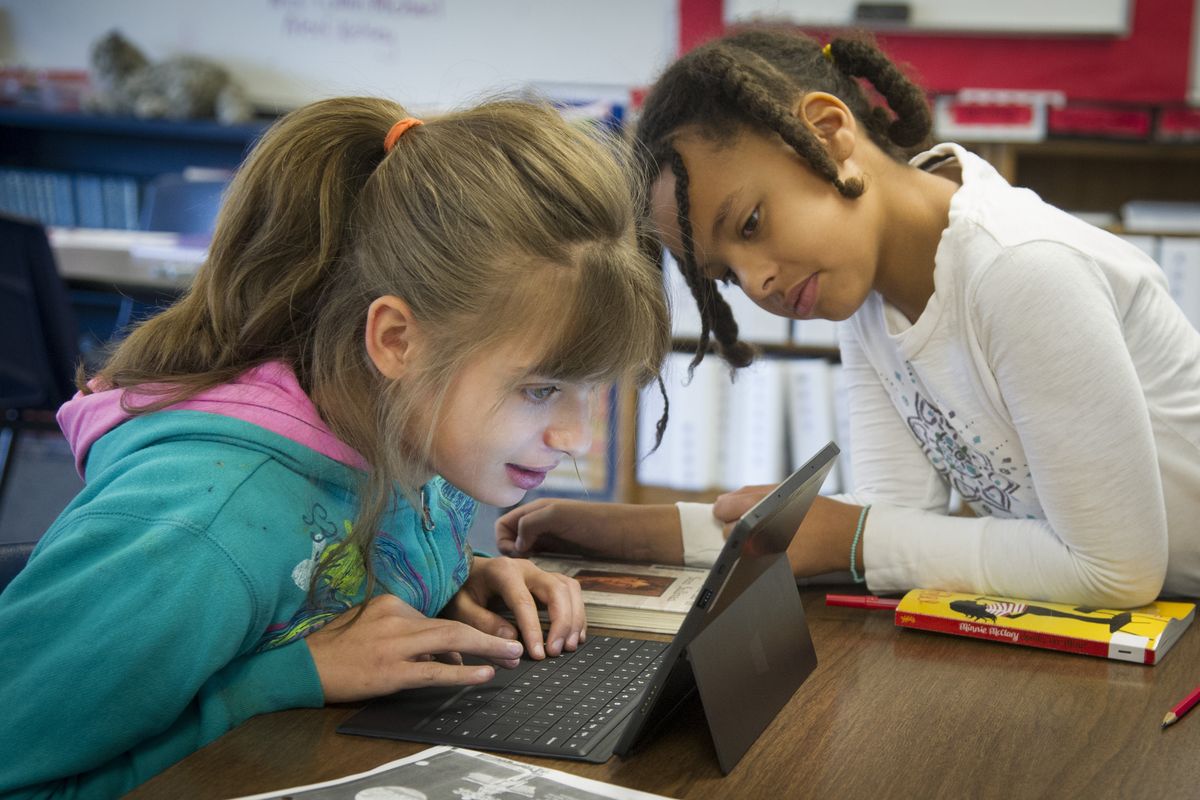Tablets are changing the classroom

As curriculum meshes with technology in the classroom, teachers are discovering that tablets can be game-changers.
Students can research without leaving the classroom, teachers can project and manipulate 3-D objects on a screen and a virtual library is available at the swipe of a student’s fingertip. Backpacks are lighter, teachers’ handouts are almost impossible to lose and it’s harder for a dog to eat homework.
St. George’s School fifth-grade teacher Jennifer Smith says Microsoft Surface tablets have been a great addition for her students. “They are flexible and portable. We can take them outside if we need to. We use them for social studies and science. They are great support for what we are already learning.”
At the same time, teachers say iPads and Microsoft Surfaces aren’t the be-all and end-all of technology in the classroom; it takes a digital ecosystem.
“Students are able to do research in class and start the writing process with me there, and I’m able to give them immediate feedback right away,” said David Holte, a history teacher at St. George’s, a private nonreligious school. “For some of the more serious work, they gravitate toward a real computer.”
St. George’s School is in the second year of using hand-held devices in the high school on a large scale. Spokane Public Schools is piloting bring-your-own-device programs in multiple buildings. This fall, Gonzaga Prep started using iPads.
“The whole reason we adopted them was to transform the classroom,” said Derek Duchesne, Gonzaga Prep’s vice principal of academics. “Really it’s about engaging the kids.”
St. George’s is using iPads in ninth and 10th grades. Next year, the school will expand it to all upper grades and have a bring-your-own-device policy. IPads also are supplementing reading and writing in kindergarten and first grade. Microsoft Surfaces are being used in the fifth-grade classroom.
IPads dominate classrooms nationwide, according to an Education Week report. Where hand-held devices are in use, 94 percent are iPads. Local teachers think what works best in the classroom remains up in the air.
One thing that’s clear is the adults making the education decisions are “digital immigrants,” and the students they’re making decisions for are “digital natives,” said Russell Werkman, St. George’s high school principal. “All of our kids are going to be using iPads or some type of computer in the future, so we wanted to teach computers that way and prepare them for things later in life.”
The biggest benefit of using the iPads by far has been organizational, Werkman said.
“My own son will lose a handout, but he always knows where to find his iPad,” he said. “Old form, students take notes and stuff them in their notebook and never find them again.”
Teachers have seen great things they’ve never seen before, Duchesne said. For example, there is a polling program so teachers can find out the consensus of opinion in the classroom. This results in participation from all students, not just extroverts.
Students are embedding photos and graphics into their homework because they can do it all electronically.
The hand-held device works best in physics and math, teachers and students agree.
One of the things that’s really helpful is a program where you can instant message other students, said St. George’s freshman Katherine Bozin. “So if you need help, you can talk out a problem.”
Meara Conner, 15, likes the ability to take notes, retrieve assignments and do all her homework with one device. “It’s really nice, actually,” she said.
The downside: “I envisioned that kids would be able to surf the Internet and write a paper and make movies, all on one device,” Werkman said. “That’s not really the case.”
Distractions are an issue too.
“The challenge is getting the students to see these devices as productivity devices, not social media devices,” Duchesne said.
Spokane Public Schools is watching what’s happening in other schools and districts before integrating hand-held devices into the mainstream.
“We do have the infrastructure. We are moving in that direction,” said Superintendent Shelley Redinger. “We are considering which devices are best because technology happens so fast, and we want to make a good investment.”